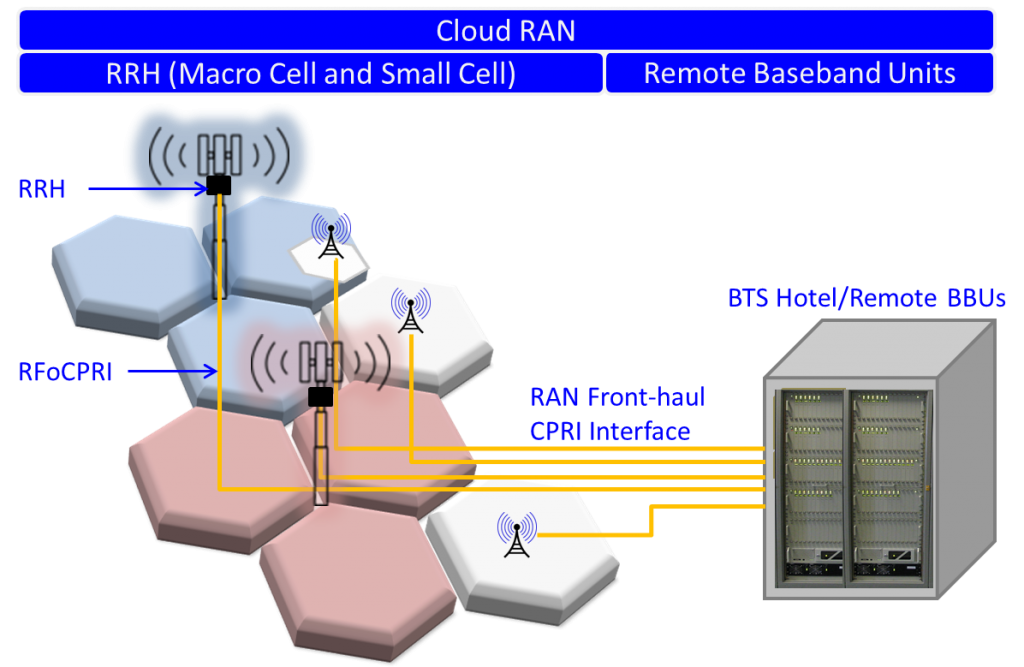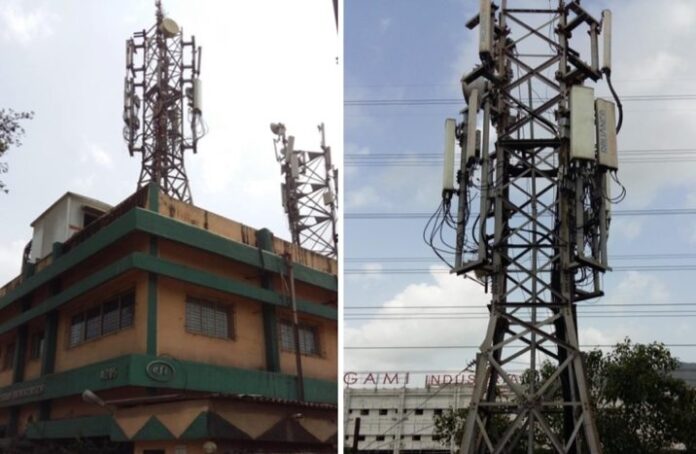In this blog we will discuss in brief the benefits of distributed RAN, some of the challenges faced by this new architecture, and how the RFoCPRI solution on Viavi’s CellAdvisor platform is helping service providers to overcome those challenges.
Advancements in radio technology (improved power amplifier efficiency, better design and longer MTBF) have allowed service providers to install radios at the top of the tower close to the antenna. This has enabled service providers to improve capacity, coverage, and signal integrity, while at the same time reducing electrical, leasing, and cable costs.
Now instead of carrying large bulky coaxial cables for every transceiver path (six or more per operator), service providers can use lighter and significantly fewer fiber and power cables between the remote radio unit at the top of the tower and the baseband unit. The baseband unit can be located at the base of the tower or remotely at a BBU hotel (think distributed RAN architecture).

This modern day cell-site provides excellent coverage and capacity compared to its predecessor, but having a RRH at the top of the tower also offers some challenges. Since all RF functions reside on the RRH, any RF maintenance or troubleshooting such as interference analysis requires reaching the top of the tower to get access to the RRH. This represents a higher operational expense and safety concern.

During an upgrade of their network, the installation and commissioning team from a Tier-1 operator and NEM in India realized that the uplink sensitivity of the cell-site was not optimal, as they were seeing a high number of failed connections. After validating all the connections and doing some testing, they concluded that there was a source of interference impacting the performance of the cell in question. One possibility was that the source was internal to the base station, but the challenge was that the radio was installed 30m (100 feet) away from the BBU on a tower. The team could not be sure if the interference was caused by the radio, PIM, or any other component of the antenna and cable system, so isolating the problem was not going to be easy or cheap.

The team then turned to Viavi’s RFoCPRI CellAdvisor solution to identify the root cause of the problem. RFoCPRI can help identify source of interference issues without climbing the tower or removing any of the cable and antenna system components. Within a short amount of time, the team was able to identify the root cause, and was able to move forward with the deployment.
To read more about how the problem was isolated, read the case study: Troubleshooting Cell Sites on the Ground with CellAdvisor.
Or, to learn more about RFoCPRI and our CellAdvisor solution, visit viavisolutions.com/rfocpri.

How a tier one operator used RFoCPRI to determine noise without tower climb
ABOUT AUTHOR
